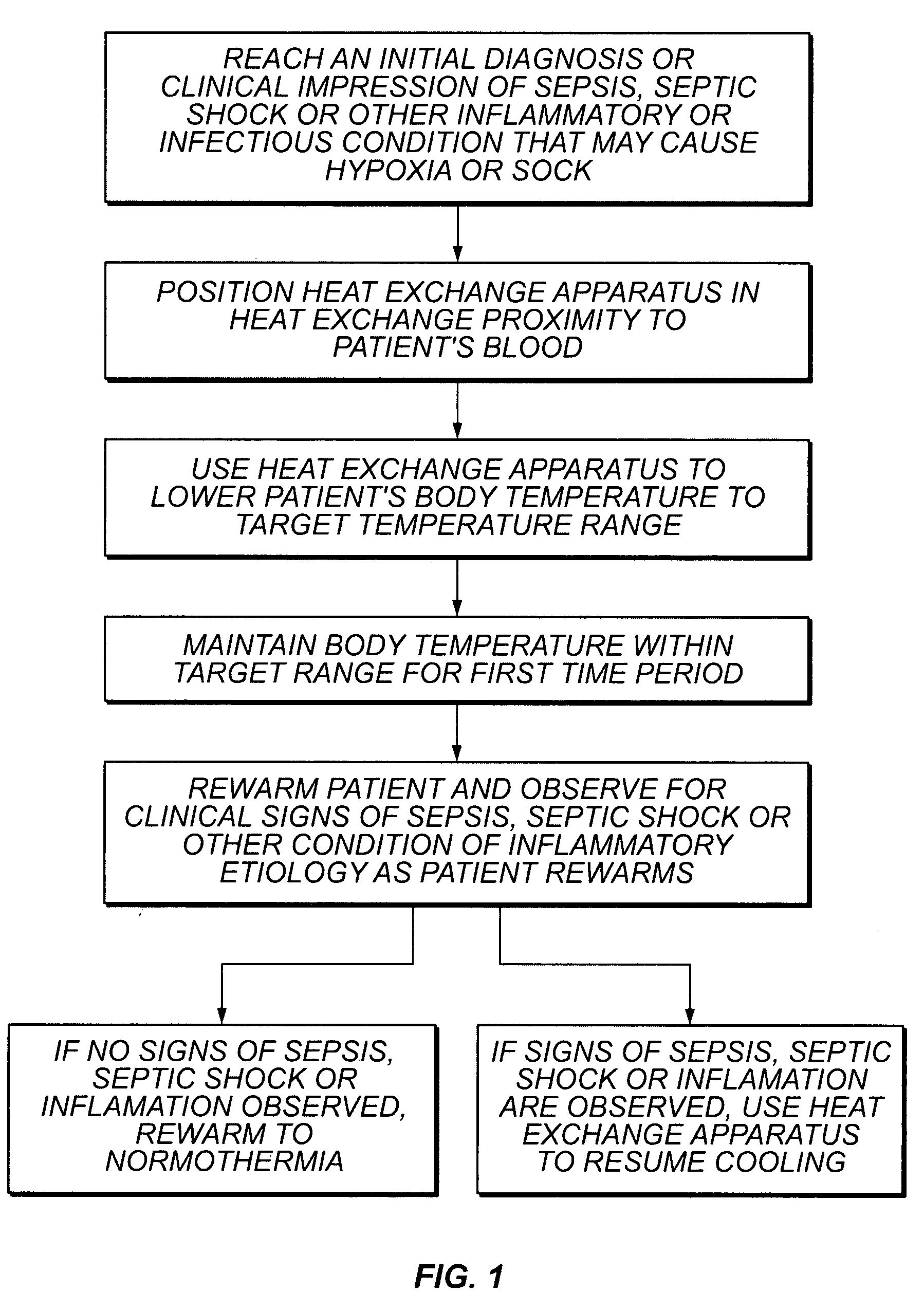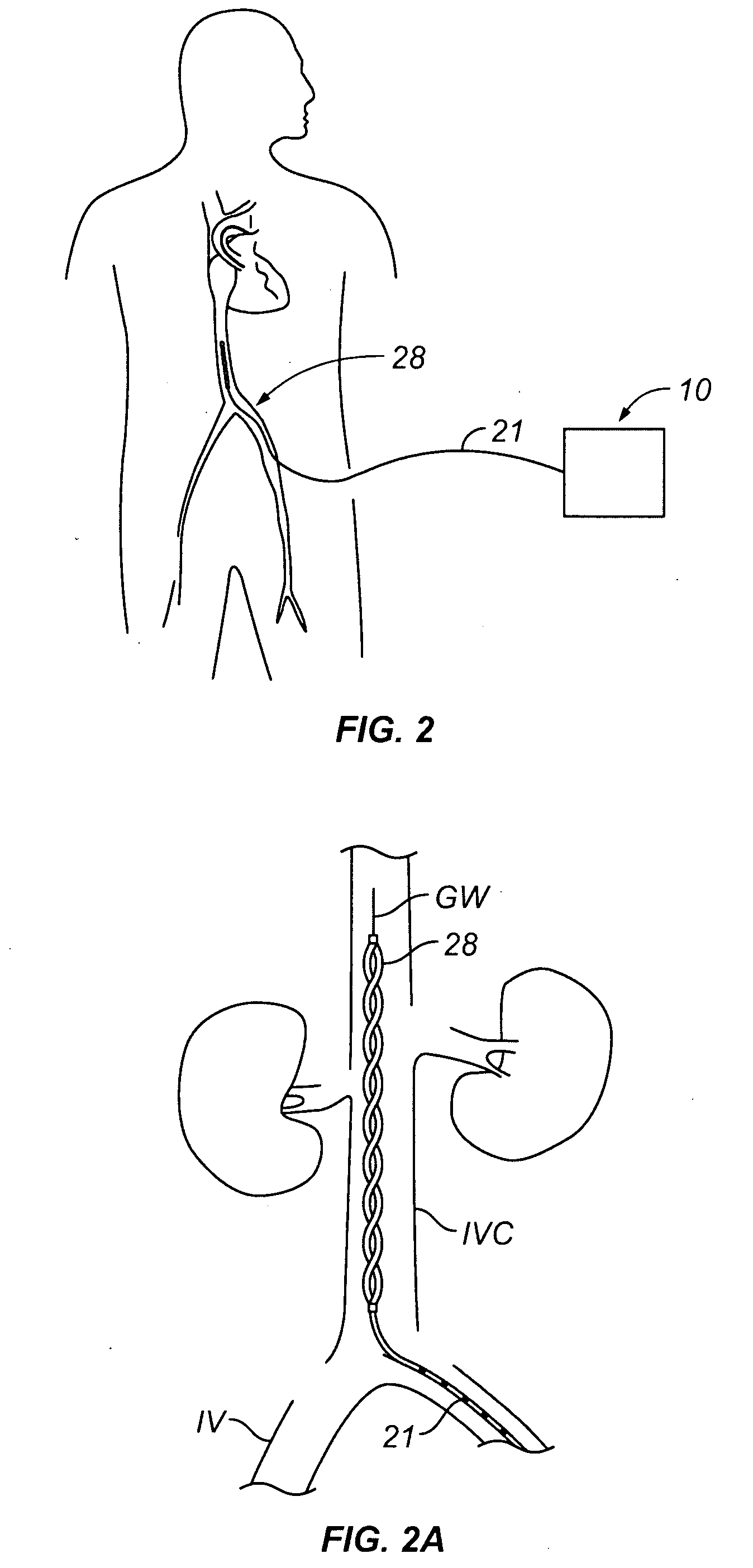Devices and methods for using endovascular cooling to treat septic shock and other disorders
- Summary
- Abstract
- Description
- Claims
- Application Information
AI Technical Summary
Benefits of technology
Problems solved by technology
Method used
Image
Examples
Embodiment Construction
[0025]The following detailed description is provided for the purpose of describing only selected embodiments or examples of the invention and is not intended to describe all possible embodiments and examples of the invention.
[0026]A. A Example of a Method for Treatment of Sepsis, Septic Shock or Other Inflammatory / Infectious Disorder:
[0027]FIG. 1 is a flow diagram which shows an example of a method for the use of hypothermia to treat sepsis, septic shock or other inflammatory or infectious disorders that cause tissue / organ hypoxia or shock. In the first step of the example of FIG. 14, an initial diagnosis or clinical impression of actual or impending sepsis, septic shock or other inflammatory or infectious disorders that cause tissue / organ hypoxia or shock is reached. Such diagnosis or clinical impression may be reached on the basis of physical examination and / or patient history and / or laboratory tests. In some patients, a clinical impression that the patient is infected with an ant...
PUM
 Login to View More
Login to View More Abstract
Description
Claims
Application Information
 Login to View More
Login to View More - R&D
- Intellectual Property
- Life Sciences
- Materials
- Tech Scout
- Unparalleled Data Quality
- Higher Quality Content
- 60% Fewer Hallucinations
Browse by: Latest US Patents, China's latest patents, Technical Efficacy Thesaurus, Application Domain, Technology Topic, Popular Technical Reports.
© 2025 PatSnap. All rights reserved.Legal|Privacy policy|Modern Slavery Act Transparency Statement|Sitemap|About US| Contact US: help@patsnap.com



